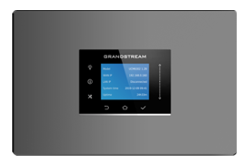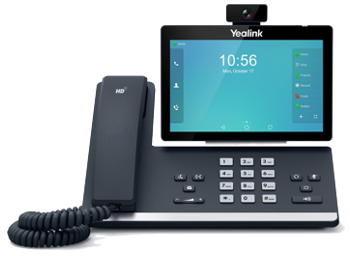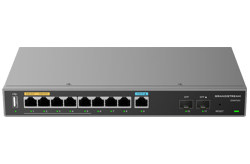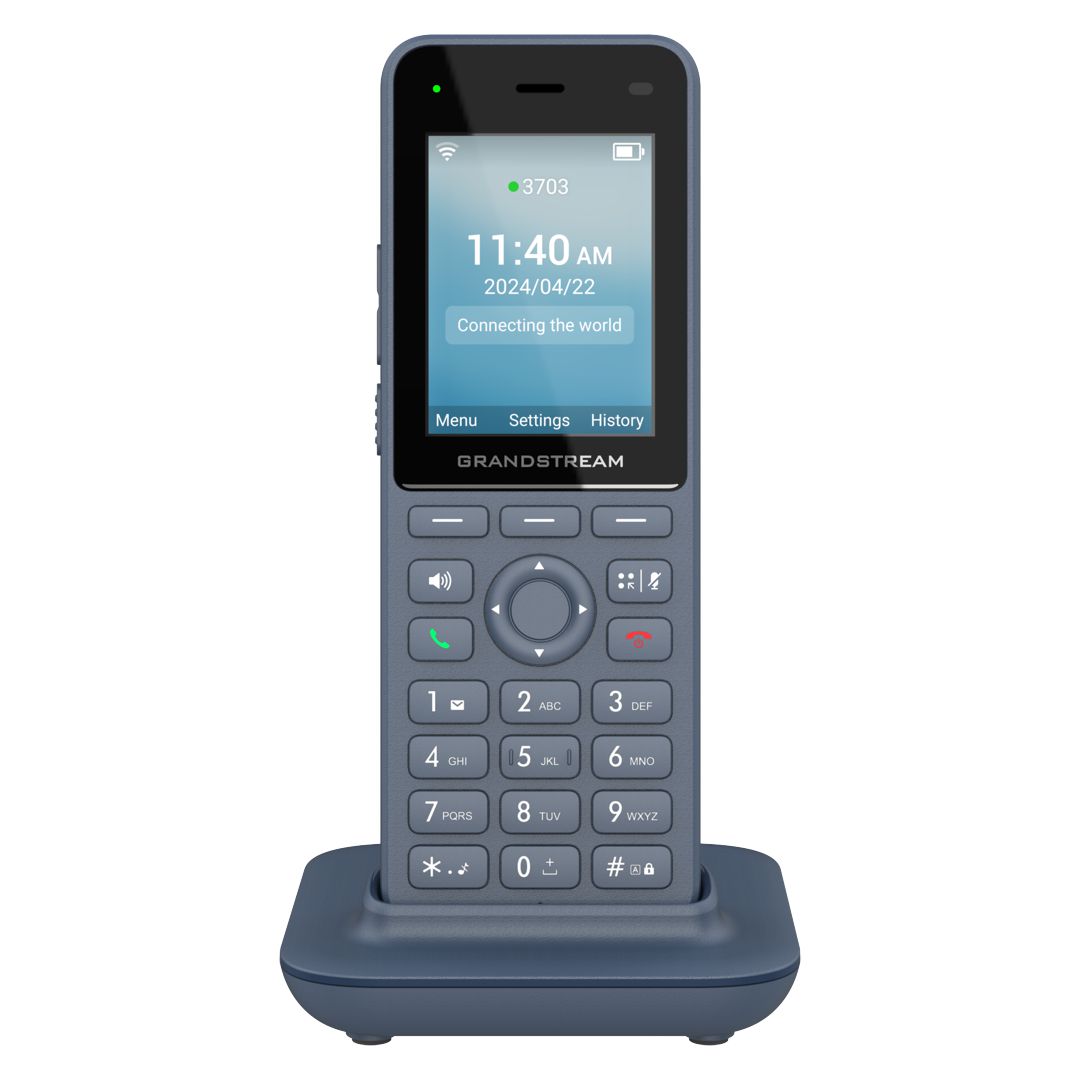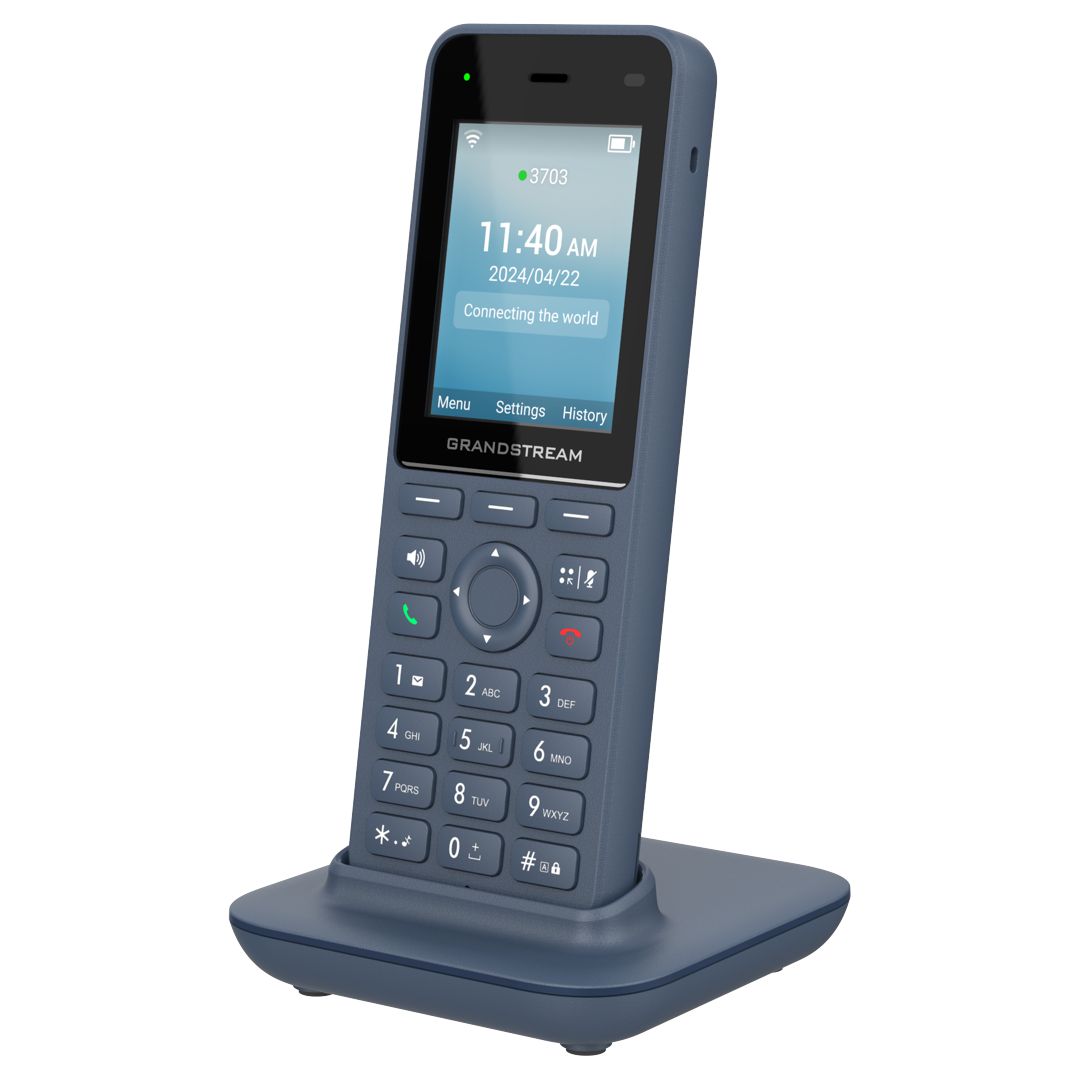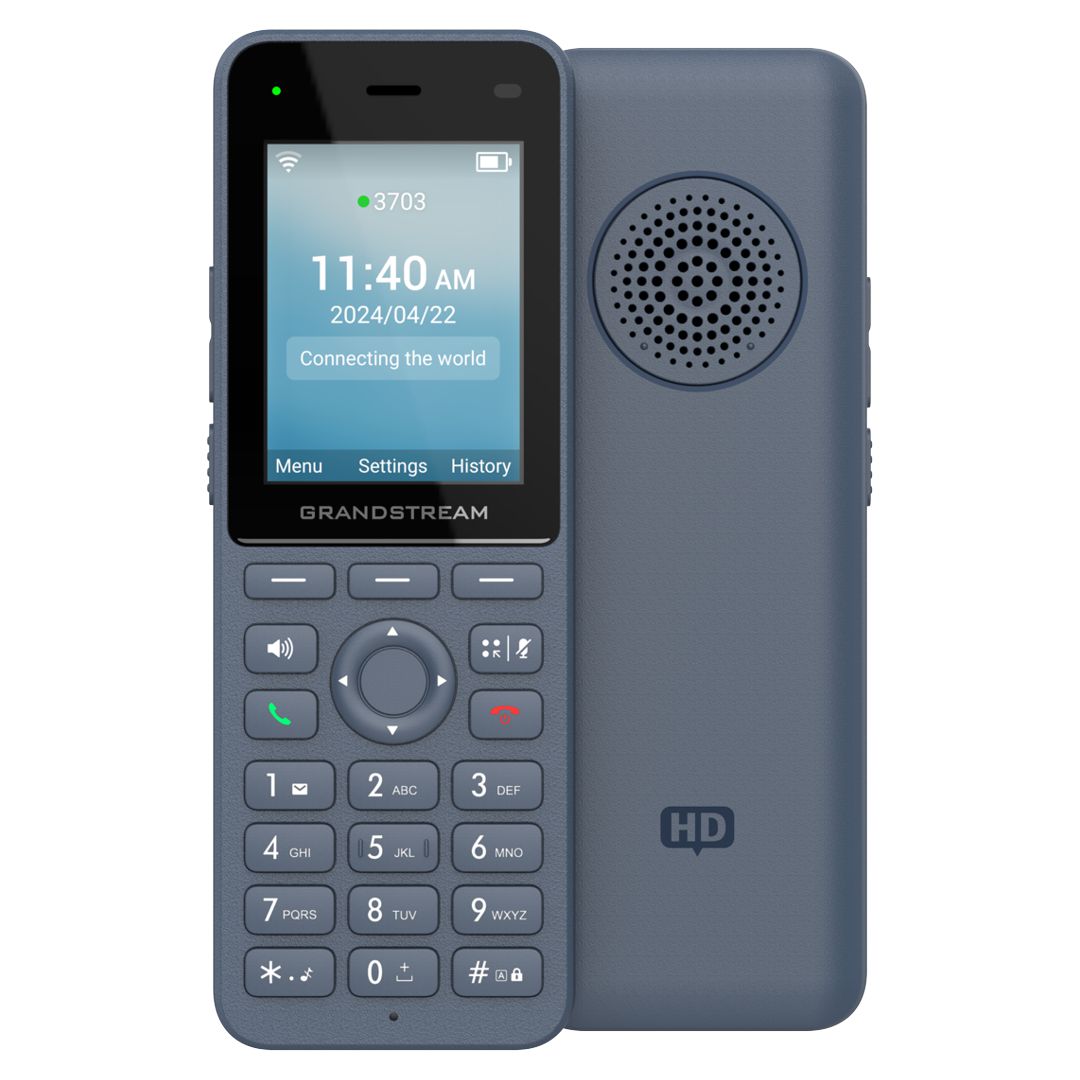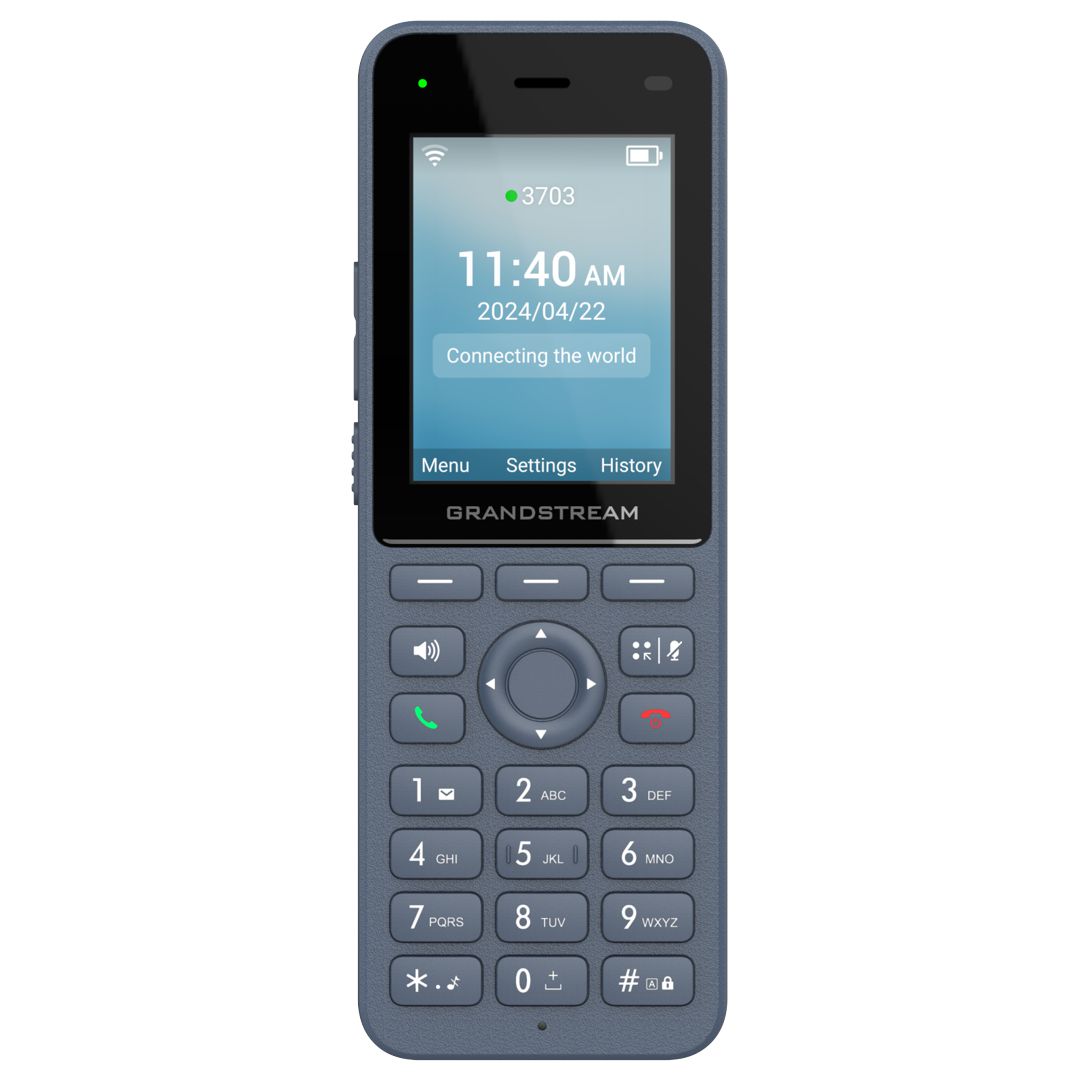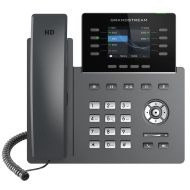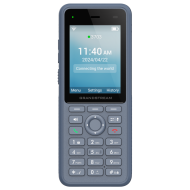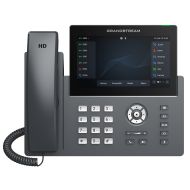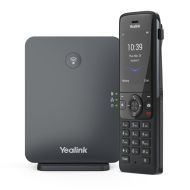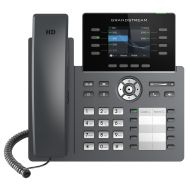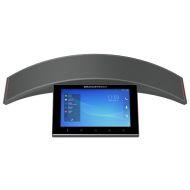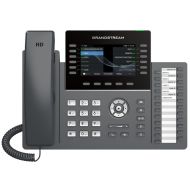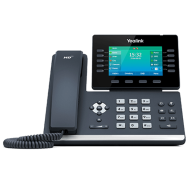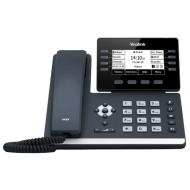Grandstream WP826 Cordless Phone - Dual Band WiFi
Grandstream WP826 Cordless Wi-Fi IP Phone
The Grandstream WP826 cordless Wi-Fi IP phone is suitable for many office, warehouse and enterprise applications, including: small, medium and large offices, retail and outlet stores, transportation and logistics distribution centers, healthcare, security, and more. The WP826 provides 12 hours of talk-time and 240 hours of standby time with an extra large 3000mAh battery to help drive employee productivity with less charging and more standby talk time versus other cordless IP phones.
This high-end cordless Wi-Fi phone is equipped with integrated dual band Wi-Fi 6, an advanced antenna design, roaming support, 4-way voice conferencing, and support for the Opus HD voice codec. This cordless office phone offers a slim and sleek design, easy-to-use interface with ultra large screen, and a variety of practical customization features. The WP826 offers wide range of mobility and flexibility around the office and warehouse.
This cordless phone comes highly recommended by SmallBusinessPhones.ca as it's the same model we use in house and around the warehouse.
Grandstream WP826 Cordless Wi-Fi IP Phone Features
- 3 SIP Accounts, 3 Lines HD voice & dual MIC design with AEC and Noise Shield Technology
- Rechargeable 3000mAh battery, 12 hour talk time, 240-hour standby
- Integrated Dual-Band Wi-Fi 6 802.11
- Integrated Bluetooth
- Push-to-Talk: Customizable function button for alarm (pending) and paging
- Auxiliary Ports: Type-C charging interface (supports fast charging)
- Base Supports Wall Installation
- WiFi AC and Protocol Standards: SIP RFC3261, DNS (A record, SRV, NATPR), DHCP, SSH, NTP, STUN, LDAP, TR069, SNMP, STRP, RTP/RTCP, RTCP-XR, TFTP, SIMPLE, HTTP/HTTPS, TCP, UDP, TLS, ARP, ICMP, IPv4, IPv6, 802.1x
- QoS Supports Layer 3 QoS (Tos, DiffServ, MPLS, DSCP)
From full charge. The standby vs. talk time specifications provided by manufacturers are 'estimated values only' and not guaranteed.
*Estimated power consumption / usage is under "ideal conditions" for all manufacturers. Actual time (talk and standby) depend on range from base, actual use, and and other factors including network conditions, office building structural (walls/glass/structural materials/other large obstructions which can affect signalling connection with base or WiFi units).
Individual handset phone settings can also affect battery charge usage, such as: screen time-out/sleep settings, LCD screen brightness setting, the number of actively registered SIP accounts, and ringer volume settings can all affect power consumption on the handset itself.

